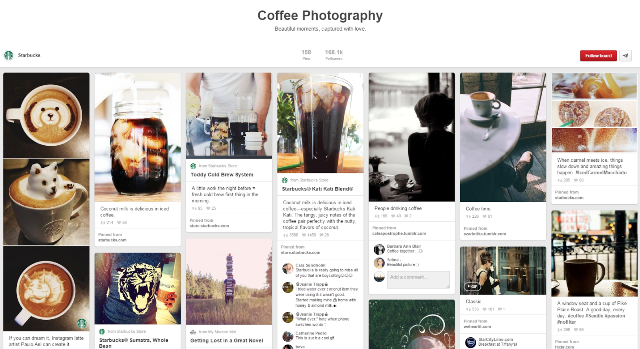 Pinterest, a visual-centric social media platform, has seen explosive recent growth. It reached 100 million active users last year, becoming one of the most important social media channels after giants such as Facebook, Twitter and Instagram. The average Pinterest user is a woman between the ages of 18-49, and 34% of adults earning over $75,000 use Pinterest, making it an ideal platform for companies with leisure products. It’s noteworthy that men are now the fastest growing Pinterest demographic.
Pinterest, a visual-centric social media platform, has seen explosive recent growth. It reached 100 million active users last year, becoming one of the most important social media channels after giants such as Facebook, Twitter and Instagram. The average Pinterest user is a woman between the ages of 18-49, and 34% of adults earning over $75,000 use Pinterest, making it an ideal platform for companies with leisure products. It’s noteworthy that men are now the fastest growing Pinterest demographic.
To learn how major brands use Pinterest, Rivalfox tracked Fortune 500 companies on Pinterest over a two-month period, analyzing a total of 29,144 pins.
Some of the major findings of the Fortune 500 Pinterest report include:
The number of Fortune 500 companies on Pinterest grew from nine in 2012 to 45 in 2013 and 178 companies in 2014.
While some 35% of Fortune 500 companies have a Pinterest account, only 17% are active Pinterest users, defined as posting at least once every two months.
B2C Dominates
B2C dominates: 69% of the Fortune 500 companies with Pinterest accounts are B2C.
B2B companies predominantly use the platform for their smaller B2C activities. For example, transportation giant, J.B. Hunt uses Pinterest to connect with drivers with several boards that highlight the trucker lifestyle and offer driving-related tips.
The number of followers of a brand doesn’t correlate with engagement. Fortune 500 companies with the most followers did not have the highest engagement levels. Nordstrom and Lowe’s have the most followers, but their relative engagement is quite low compared to brands like Starbucks, Target and Kraft Foods, all of which have significantly fewer followers.
Photos vs. Videos
Videos represent just 1.3% of the total pins over the two-month study.
Photo pins received five times more engagement than videos. Instagram is experiencing a similar trend. A previous study on large brands using Instagram showed that videos receive on average 20,000 engagement points versus 35,000 for photos. Images are faster to process, and social media users often seek instant gratification.
Lessons from a Case Study
Starbucks, which leads brands in engagement on Pinterest, offers a case study of how to successfully market on the platform. Lessons include:
Harness the power of group boards. Encouraging contributors to add to boards increases engagement and creates a self-feeding content process. Boards like “The Art of Espresso” or “Coffee Photography” curate the most beautiful pieces of coffee art online.
Create contests. Contests trigger creativity from contributors and generate reactions when people are asked to vote for their favorite contenders. The “Starbucks Cup Art” competition was very successful.
Repurpose content. Starbucks re-uses suitable pictures from its Instagram page on Pinterest. Marketers can repurpose any kind of content, including blog posts, which can be transformed into infographics.
Too Many Brands Ignore Pinterest
The lack of large companies employing effective tactics on Pinterest might be surprising, especially since most are active on Facebook and Twitter. A University of Massachusetts Dartmouth Center survey reported that 413 Fortune 500 companies are active on Twitter.
“Fortune 500 companies are absolutely missing out by not being active on Pinterest, particularly if their target audience includes women with disposable income,” Rivalfox CEO Alex Ivanov told SocialTimes.
Bottom Line: A new study reveals how Fortune 500 companies use Pinterest, outlines the shortcomings of the companies’ strategies and recommends successful tactics. More brands can benefit from Pinterest, a fast-growing social media channel that brands ignore at their peril.
William J. Comcowich founded and served as CEO of CyberAlert LLC, the predecessor of Glean.info. He is currently serving as Interim CEO and member of the Board of Directors. Glean.info provides customized media monitoring, media measurement and analytics solutions across all types of traditional and social media.




